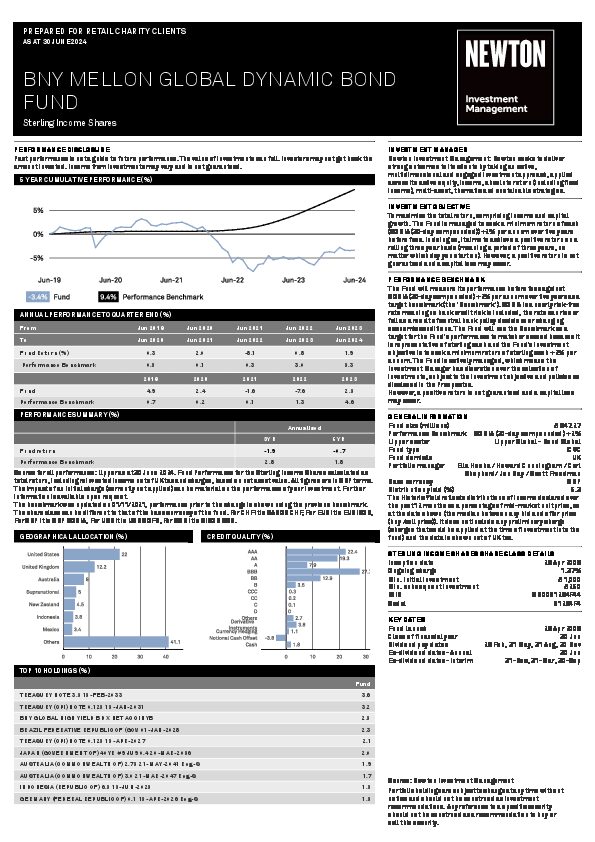Strategy profile
-
Objective
-
The strategy seeks to maximise the total return, comprising income and capital growth. It is managed to seek a minimum return of cash (SONIA (30-day compounded)) +2% per annum over five years before fees. In doing so, it aims to achieve a positive return on a rolling three-year basis (meaning a period of three years, no matter which day you start on). However, a positive return is not guaranteed and a capital loss may occur.
-
Performance benchmark
- SONIA (30-day compounded) +2%
-
Literature
-
Application form
Key Investor Information Document (KIID)
Prospectus
Investment team
-
- This strategy is managed by a focused, experienced fixed-income team. In-house research analysts are at the core of our investment process, and our multidimensional research platform spans fundamental, thematic, responsible investment, quantitative, geopolitical, investigative and private-market research to promote better-informed investment decisions.
Want to find out more?
Welcome to WordPress. This is your first post. Edit or delete it, then start blogging!
Welcome to WordPress. This is your first post. Edit or delete it, then start blogging!
Welcome to WordPress. This is your first post. Edit or delete it, then start blogging!
Welcome to WordPress. This is your first post. Edit or delete it, then start blogging!
Welcome to WordPress. This is your first post. Edit or delete it, then start blogging!
Welcome to WordPress. This is your first post. Edit or delete it, then start blogging!
Welcome to WordPress. This is your first post. Edit or delete it, then start blogging!
Your capital may be at risk. The value of investments and the income from them can fall as well as rise and investors may not get back the original amount invested.
ESG can be one of many inputs into the fundamental analysis. Newton will make investment decisions that are not based solely on ESG analysis. Other attributes of an investment may outweigh ESG analysis when making investment decisions. The way that material ESG analysis is assessed may vary depending on the asset class and strategy involved. As of September 2022, the equity investment team performs ESG analysis on equity securities prior to their recommendation. ESG analysis is not performed for all fixed-income securities. The portfolio managers may purchase equity securities that are not formally recommended and for which ESG analysis has not been performed.











